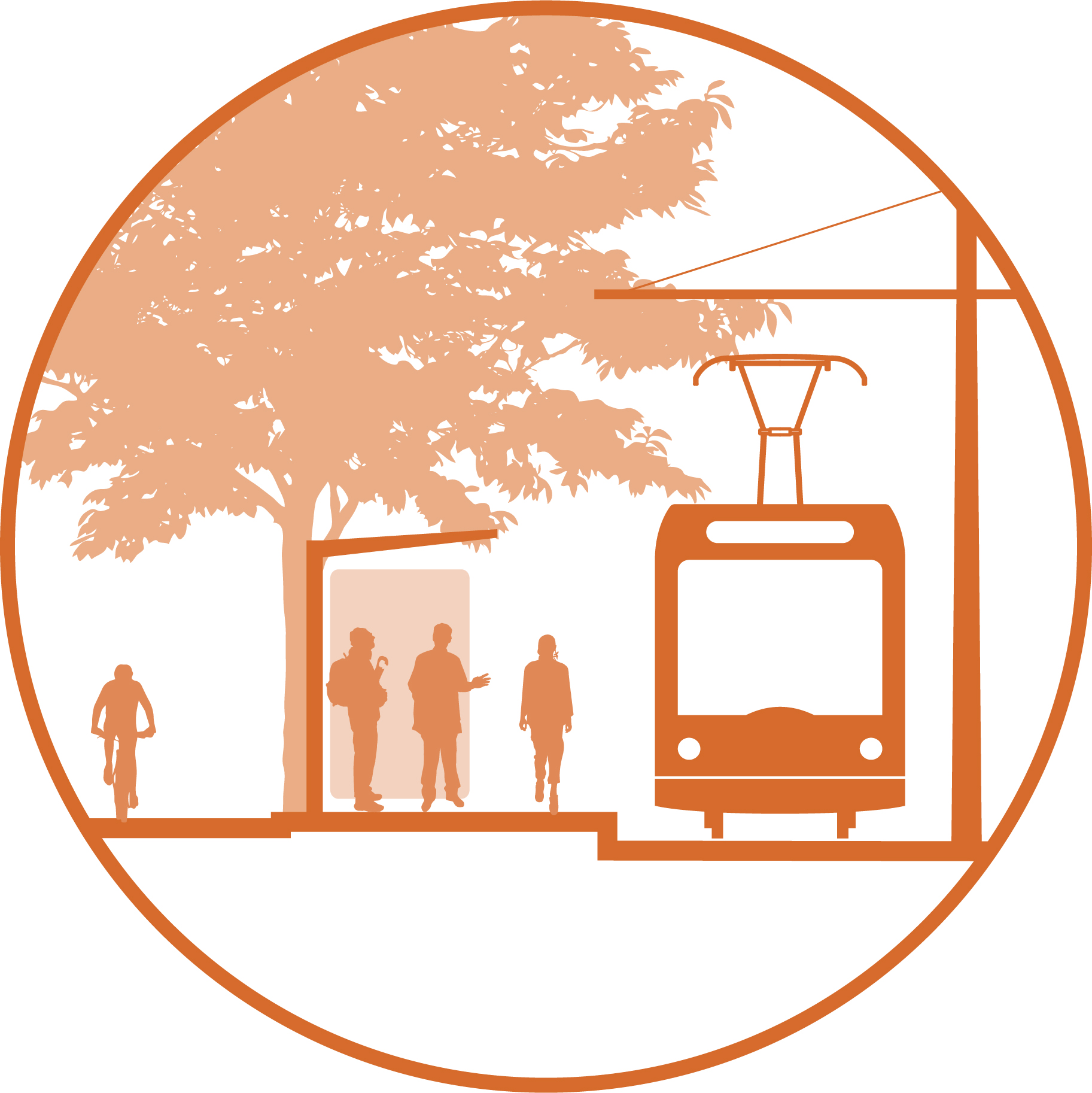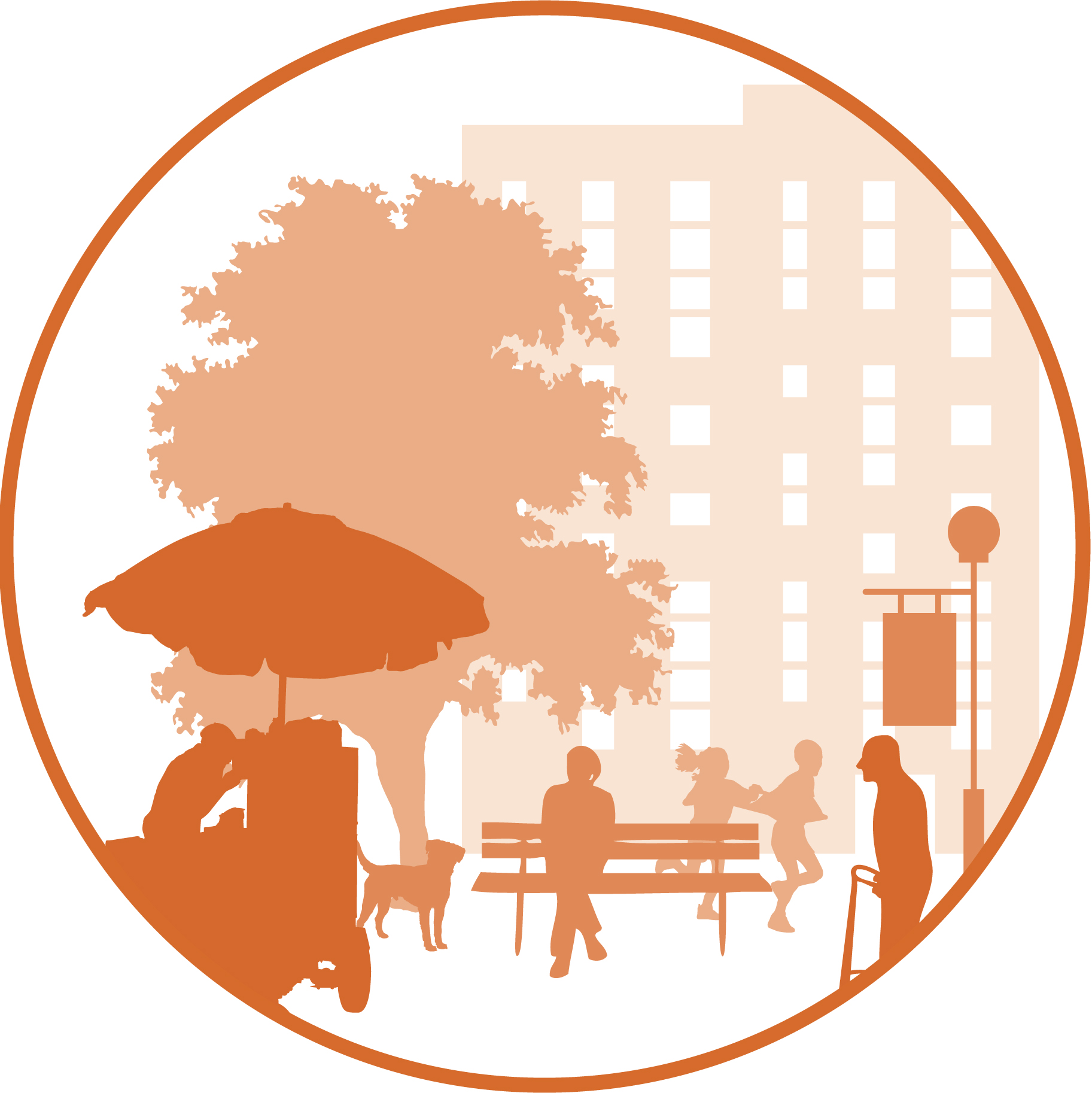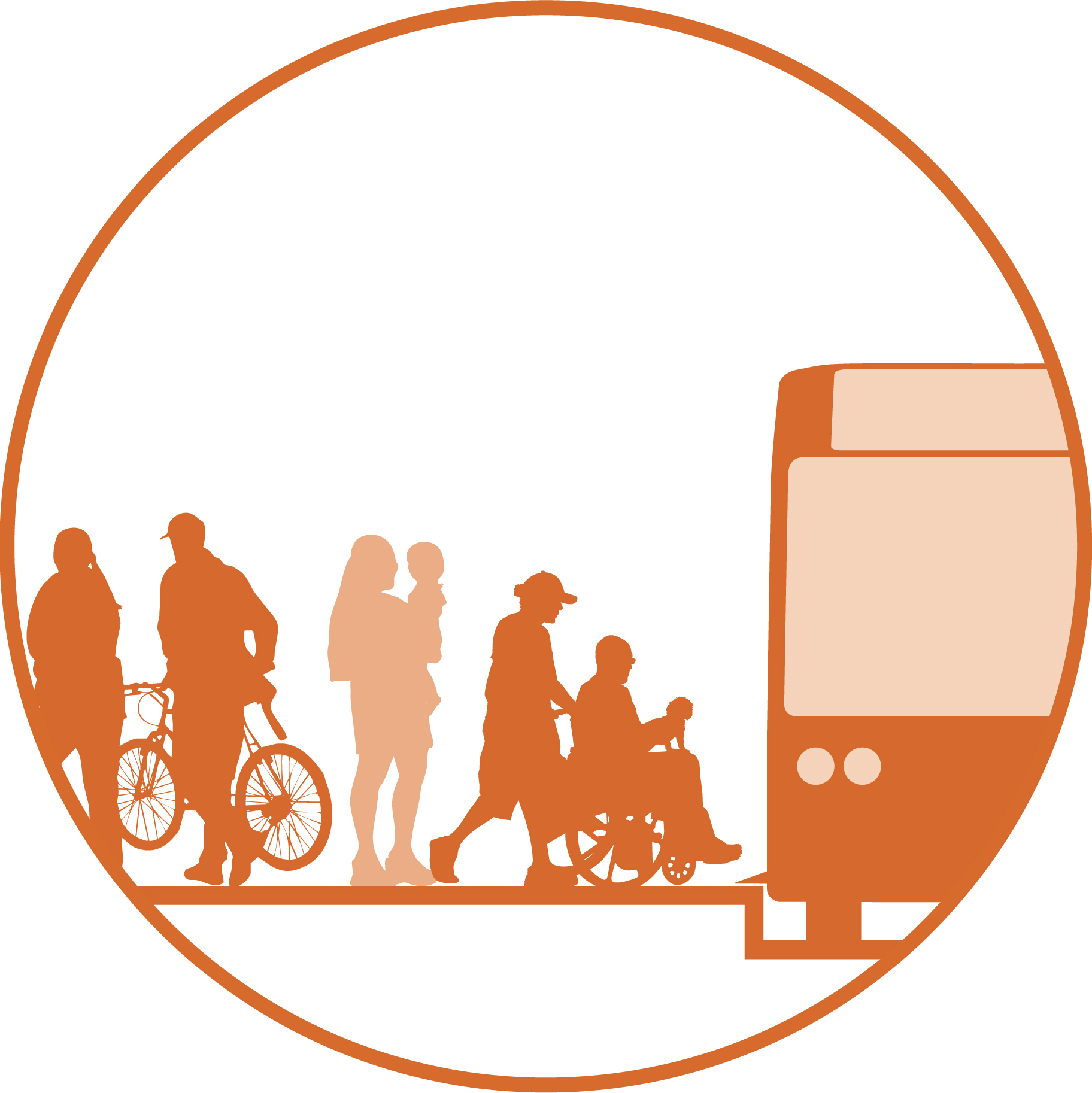
BETTER STREETS, BETTER SERVICE
Making transit work in cities means raising the level of design across the entire street network. Cities can take the lead on transit, creating dedicated lanes and transitways, designing comfortable stops and stations, and coordinating action with transit agencies on intersections and signals.
Transit-first street design also means treating walking as the foundation of the transportation system. Ultimately, the efficiency of transit creates room for public space, biking and walking networks, and green infrastructure—allowing cities to remake their streets as safer, more sustainable public spaces.

TRANSIT CREATES URBAN PLACES
Cities and transit are deeply linked. In vibrant, bustling cities, people are on the move, and transit plays an indispensable role in keeping them moving. Walkable urban places have a critical mass of people and activities that support and rely on transit to connect them to other places. Cities can strengthen this synergy by creating transit streets: places that move people.
With the majority of US residents preferring walkable, bikeable urban environments, the value of better transit accrues not only to existing transit passengers and newly attracted ones, but to people who will decide where to live and start businesses—in which neighborhood, city, or region—based on the availability of transit-served walkable neighborhoods. These location decisions affect the competitiveness of the entire metropolitan area and justify transit-first policies in street design and investment.

A MOBILITY SERVICE FOR THE WHOLE CITY
Making it possible to quickly and reliably go anywhere by transit is a way for cities to significantly improve quality of life. A transit system designed as a mobility service focuses on its value to the rider, providing prompt, seamless, and safe connections to where people want and need to go. A public transit-based mobility system, open to people of all ages and abilities, is fundamentally more equitable than one based primarily on private vehicles.
A crucial complement to the transit network is a suite of flexible, convenient, and affordable mobility choices—walking, bicycling, shared mobility, and on-demand rides—that, together with fixed-route transit, allow residents to avoid the costs of car ownership and make proactive decisions about each trip they take.